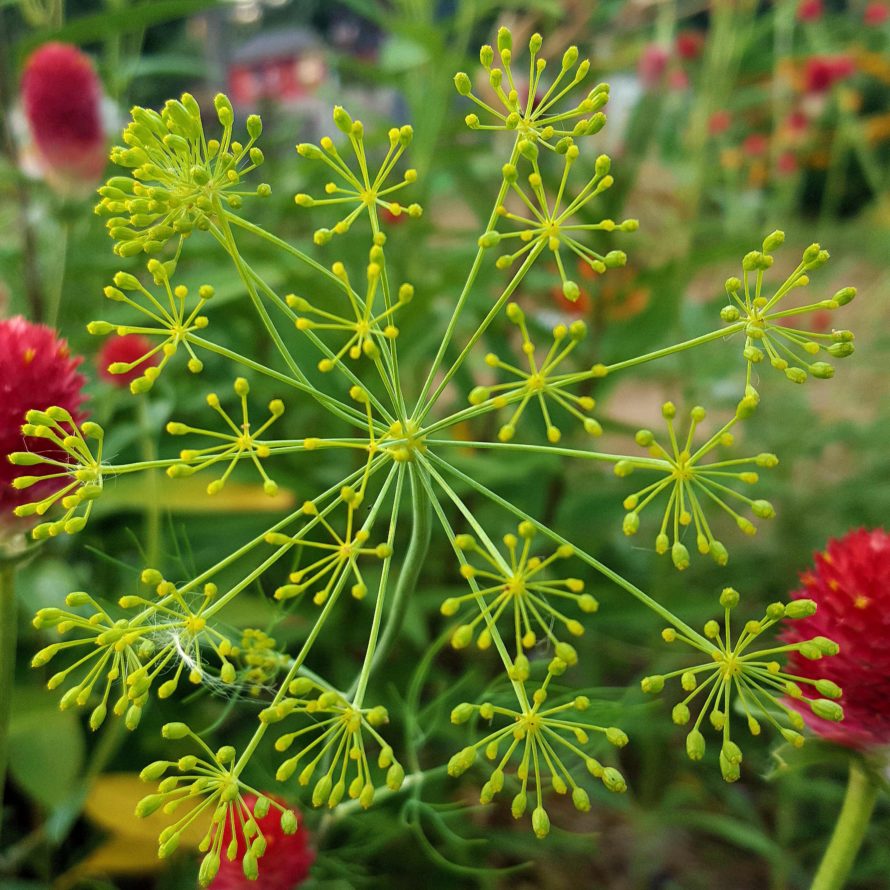Dill (Anethum graveolens) is an annual. It is also called dill weed to distinguish it from the seed which is used as a spice. The leaves are widely used in cuisines in Europe, the Middle East, Southeast Asia and Asia. The seeds are used in baked goods or chewed as it is reputed to freshen breath. Both the foliage and the seeds are used in pickling recipes. The flowers are umbels that beneficial insects find irresistible.
Dill is best grown in your vegetable garden rather than a separate herb garden. It is a companion plant for brassicas such as cabbage and also for cucumbers which is convenient if you are planning on making dill pickles! It attracts ladybugs, lacewings and parasitic wasps. It repels aphids and spider mites.
Make sure that you grow enough to share. Dill is the host plant for swallowtail butterflies. Their caterpillars will munch the leaves almost faster than you can harvest them so grow some plants just for them.
Depending on the variety, dill ranges in height from 18 inches to 3 feet. Taller plants tend to flop over so you should provide them with some kind of support. Dill has a long taproot so if you are planning on growing it in a container, make sure that the container is deep enough to accommodate the long taproot. The dwarf varieties of dill which range in size from 18- to 24-inches tall are excellent candidates for container growing.
The secret to growing dill is warm weather and full sun. There is no need to buy plants. Dill grows easily from seeds and will readily self-sow unless you harvest the umbels for seeds. It also does not like to be transplanted, another good argument for growing it from seed. Sow your seeds about ¼ inch deep late in the spring when the soil temperature is 60⁰F to 70⁰F. Germination should occur within 10 to 14 days. Keep both your seeds and plants evenly moist. Dill is a short-lived annual. To prolong your harvest, sow seeds every 2 to 3 weeks throughout the summer. Don’t worry about buying too much dill seed. The seed stays viable for 3 to 10 years.
You can begin harvesting the leaves when the plants reach 6 inches in height. If you want just the leaves, remove the flower buds before they bloom. Once the plants bloom, the leaves start to lose their flavor. They also lose their flavor when dried so it’s best to use only freshly harvested leaves. To preserve your harvest, either freeze or freeze-dry the leaves.
To harvest the seeds, cut the flowers from the stalks when the seed starts to turn brown. Store the seed heads upside down in paper bags with slits cut in them for air circulation. As the seed ripens, it will drop to the bottom of the bags. When all of the seeds are completely dry, store them in tightly sealed glass jars in a cool, dark place. Try to use it within one year for the most flavor. After one year, the flavor starts to fade.

